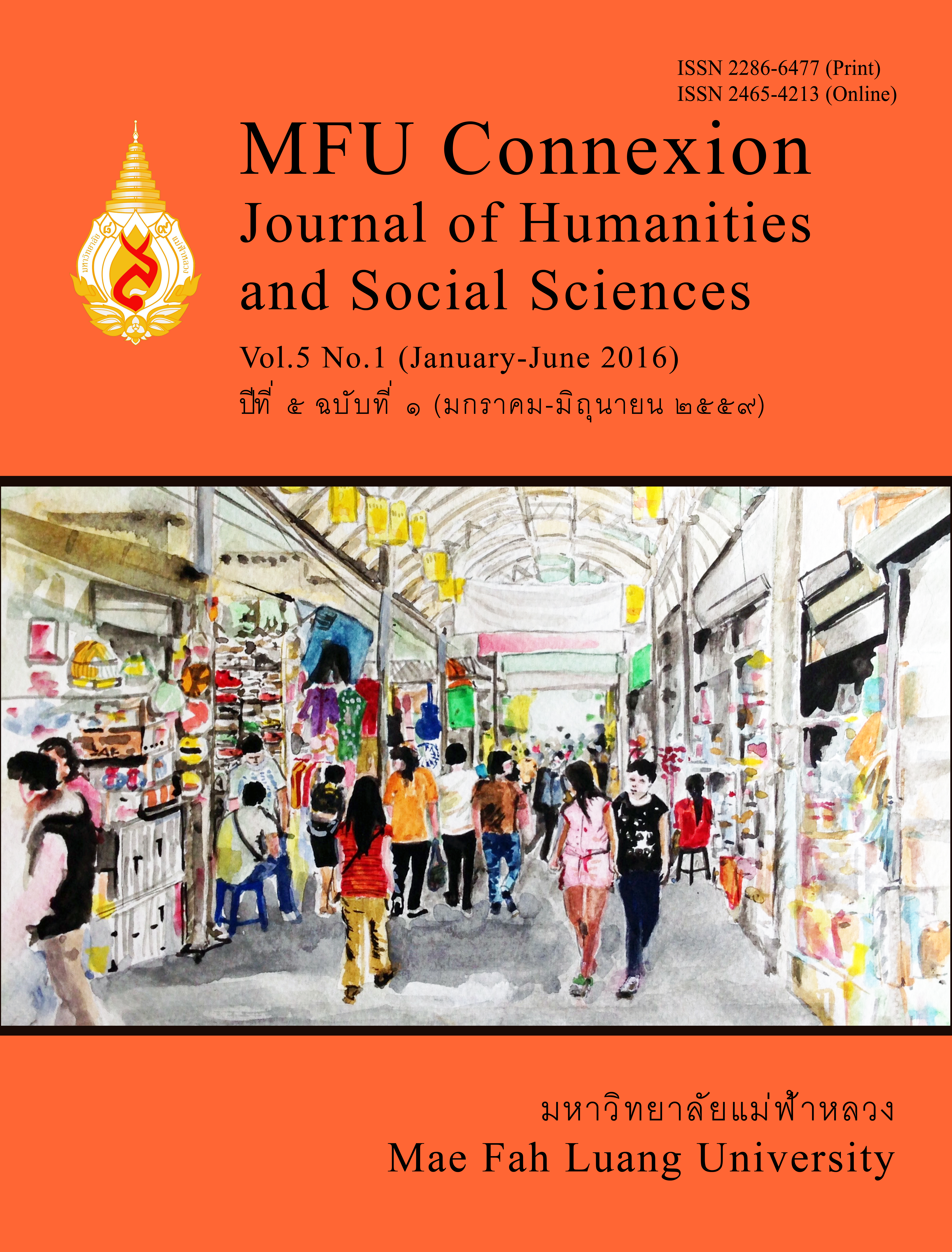Cash Conversion Cycle: Important Knowledge that Entrepreneurs Should Know (in Thai)
Main Article Content
Abstract
The cash conversion cycle is an important tool to analyse liquidity. This means that business enterprises are able to pay for short-term debt. The cash conversion cycle will be short or long depends on 3 times duration of sales, inventory on hands, and payables. It is the fact that longer of firms’ cash conversion, the more short-term funds will be required for business expenditure. The shorter of cash conversion cycle reflects the cash from selling products before paying debt. Firms’ cash conversion cycle in different industries may vary from one to another. Previous researches findings significantly revealed that shortening the cash conversion cycle enhances a business’s profitability.
Article Details
Copyright
Connexion: Journal of Humanities and Social Sciences has an exclusive right to publish the accepted articles in any form. However, the author retains the following rights:
1. The right to the ownership of the article;
2. The right to use all or part of the article in his/her other works;
3. The right to re-produce the article for personal use or for use in the author’s organisation, in which case the author must obtain permission from Connexion: Journal of Humanities and Social Sciences;
4. The right to make copies of all or part of the work for educational use or for the author’s use in classroom teaching; and
5. The right to include the work (both the preprinted and printed versions) in an institutional repository.
References
ตลาดหลักทรัพย์แห่งประเทศไทย. (2558) รายงานประจำปีของแต่ละบริษัท, จาก https://www.setsmart.com/ism/login.jsp [ค้นเมื่อ 20 กุมภาพันธ์ 2559]
Abuzayed, B. (2012) ‘Working capital management and firms’ performance in emerging markets: The case of Jordan’, International Journal of Managerial Finance, vol. 8, no. 2, pp. 155-179.
Dong, H. P. & Su, J. (2010) ‘The relationship between working capital management and profitability: A Vietnam case’, International Research Journal of Finance and Economics, vol. 49, pp. 59-67.
Ebben, J. & Johnson, A. (2011) ‘Cash conversion cycle management in small firms: Relationships with Liquidity’, Journal of Small Business & Entrepreneurship, vol. 24, no.3, pp. 381-396.
Deloof, M. (2003) ’Does working capital management affect profitability of Belgian firms?’, Journal of Business Finance &Accounting, vol. 30, no. 3-4, pp. 573-587.
Falope, O. I. & Ajilore, O. T. (2009) ‘Working capital management and corporate profitability: Evidence from panel data analysis of selected quoted companies in Nigeria’, Research Journal of Business Management, vol. 3, no.3, pp. 73-84.
Filbeck, G. & Krueger, T. M. (2005) ’An analysis of working capital management results across Industries’, American Journal of Business, vol. 20, no. 2, pp. 11-18.
García‐Teruel, P. & Martínez‐Solano, P. (2007) ’Effects of working capital management on SME profitability’, International Journal of Managerial Finance, vol. 3, no. 2, pp.164 –177.
Gill, A., Biger N., & Mathur, N. (2010) ‘The relationship between working capital management and profitability: Evidence from the United States’, Business and Economics Journal, Vol. 10, no. 1, pp. 1-9.
Gill, A. & Biger, N. (2013) ’The impact of corporate governance on working capital management efficiency of American manufacturing firms. Managerial Finance, vol. 39, pp. 116-132.
Koumanakos, D. P. (2008) ’The effect of inventory management on firm performance’, International Journal of Productivity and Performance Management, vol. 57, no.5, pp. 335-369.
Kohlbacher, M. & Gruenwald, S. (2011) ’Process ownership, process performance measurement and firm Performance’, International Journal of Productivity and Performance Management, vol. 60, no. 7, pp. 709-720.
Lazaridis, I. & Tryfonidis, D. (2006) ’Relationship between working capital management on the profitability and profitability of Listed companies in the Athens Stock Exchange’, Journal of Financial Management and Analysis, vol. 19, no. 1, pp. 32-38.
Lasher, W. R. (2008) ‘Financial management: A practical approach, China: Thomson South Western.
Li-Hua, L., Szu-Hsien, L. & Chun-Faan, Y. (2014) ‘The analysis of company liquidity a using cash conversion cycle application: Evidence from Taiwan’, Global Journal of Business Research, vol. 8, no.5, pp. 97-103.
Muscettola, M. (2014) ’Cash conversion cycle and firm’s profitability: An empirical analysis on a sample of 4,226 manufacturing SMEs of Italy’, International Journal of Business and Management, vol. 9, no.5, pp. 25-35.
Nazir, M. S. & Afza, T. (2009) ’Working capital requirements and the determining factors in Pakistan,’ The IUP Journal of Applied Finance, vol. 15, no.4, pp. 28-38.
Padachi, K. (2006) ‘Trends in working capital management and its impact on firms’ performance: An analysis of Mauritian small manufacturing firms’, International Review of Business research Papers, vol. 2, no. 2, pp. 45-58.
Talonpoika, A., Monto, S., Pirttilä, M., & Kärri, T. (2014) ‘Modifying the cash conversion cycle: Revealing concealed advance payments’, International Journal of Productivity and Performance Management, vol. 63, no. 3, pp. 341–353.
Raheman, A., & Nasr, M. (2007) ‘Working capital management and profitability-case of Pakistani firms’, International Review of Business Research Papers, vol. 3, pp. 279-300.
Richards, V. D. & Laughlin, E. J. (1980) ‘A cash conversion cycle approach to liquidity analysis, Financial Management, vol. 9, no. 1, pp. 32-38.
Wang, Y. (2002) ‘Liquidity management, ‘operating performance, and corporate value: Evidence from Japan and Taiwan’, Journal of Multinational Financial Management, vol.12, no. 2, pp. 159-169.
Winborg, J. & Landstrom, H. (2001) ‘Financial bootstrapping in small businesses: Examining small business managers’ resource acquisition behaviors’, Journal of Business Venturing, vol.16, no. 3, pp. 235-254.


